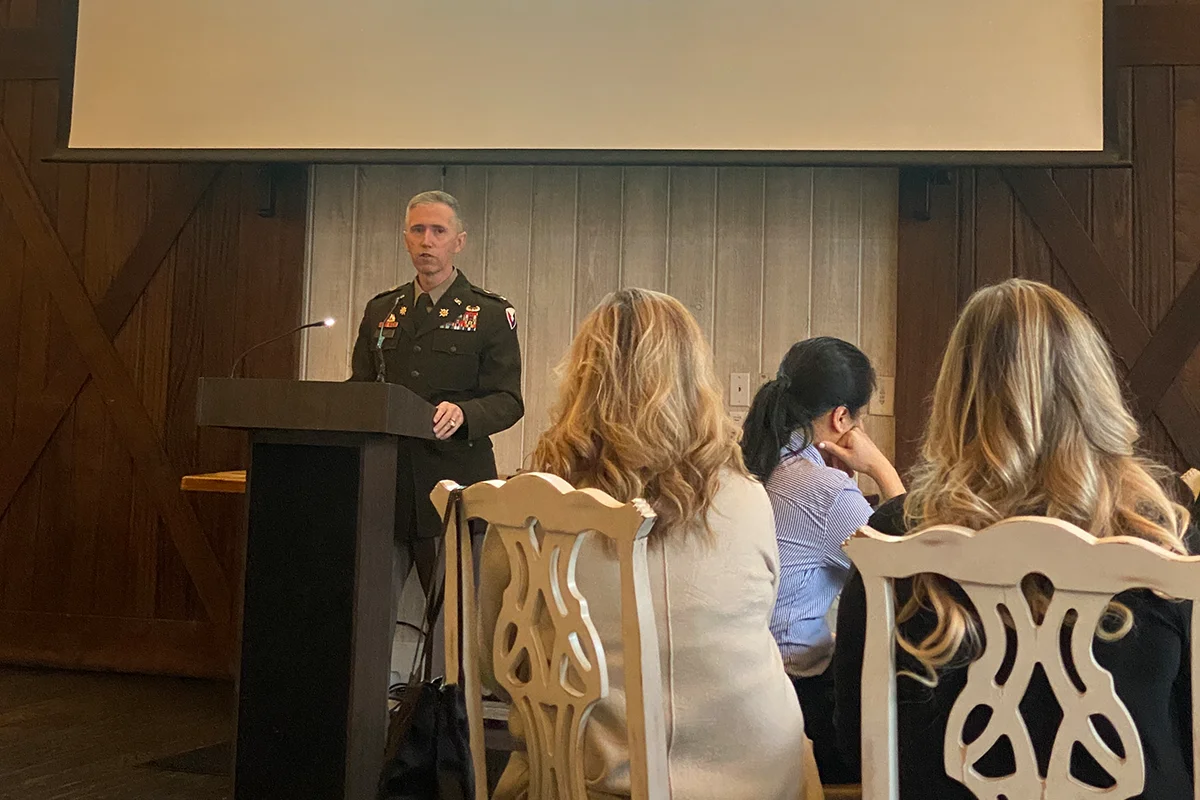Endangered Species and Development

In a conversation with Project Manager II, Curtis Leidig, and Project Specialist, Anne Pierce, we discussed the impacts of both existing plant and animal life on the feasibility of development of real estate.
For nearly 50 years, the Endangered Species Act (ESA) has guided federally funded projects and regulated the evaluation and management of environmental impacts on development. While environmental concerns relevant to the ESA are not a common issue for Real Projectives® (RPL), they do occasionally get our attention and guide our work. Over the years, it’s something we’ve garnered experience from the relevance of endangered species of turtles, birds, and wildflowers, to wetlands mitigation strategies.
Endangered Species
Bog turtles—the smallest turtles in North America—are a critically endangered species that’s limited to the eastern US, according to the Nature Conservancy. As the Conservancy reports, “habitat loss and fragmentation and forest succession represent the primary decline of the species.”
On a project in eastern Pennsylvania, RPL was charged with engaging an expert to survey for these turtles and develop alternative solutions for our client’s site as well as an adjacent site. The final approach involved enlarging the storm sewer pipes through both sites and installing an enlarged culvert under a road into an existing creek so that any turtles could move safely from one end to the other. In this case, no turtles were found in the survey, and the work was able to proceed. If bog turtles had been found on site, there would have been an immediate delay of work until a solution was devised.
On a project in Florida, endangered Gopher tortoises were discovered. The Gopher tortoise is a species that digs holes in the ground until they reach the water table—anywhere from three to fifteen feet below ground. They prefer a certain type of plant and sandy soil found in the project location site, so we again engaged an expert to perform a site survey. We hired a civil engineer, as they tend to focus on and have knowledge of the unique jurisdictions. Leidig said, “They are already familiar with local endangered species, their habits and such, as well as the area that’s going to be developed.” The process is state-mandated, so it’s essential to have that knowledge on the team.
“During the survey, we found ten tortoises,” Leidig explained. “We then worked with the engineer to find a sanctuary that could take custody of the tortoises (for a fee). Sixty days before excavation began, we re-surveyed the area and found five additional tortoises which were also relocated. The tortoises were carefully lifted from the soil with a backhoe and then crated for attentive transportation to the sanctuary where they would thrive in their new home.” In addition to the requirements of the federal ESA, state policy controls how species are handled. We learned that there are unfortunately few sanctuaries.
While working on another project in Florida, RPL faced concerns that development could impact a rare bird species that migrate to the region to mate and only nests in a specific type of tree that existed on the project site. To determine the extent of concerns, we hired a consultant to survey the trees and arranged to have people come out on certain days and make bird calls. No birds responded during that period, so we ascertained that there were no birds of concern that depended on the land or existing trees.
As advisors and project managers, it’s important for us to stay educated about the potential environments of endangered species for our clients. “Regulations vary from county to county, and even more severely from state to state,” Pierce shared. According to Leidig, “In Florida and Virginia, there are no regulations about removing trees. In contrast, California law states that you must plant two trees for every one that is removed.”
Furthermore, Leidig recalls working on a project in California where the timeline was extended an entire year due to a rare wildflower. “We knew there weren’t any wildflowers because it was an asphalt parking lot and flowers don’t grow well on asphalt, yet we still had to wait almost a full year to guarantee that no wildflowers had grown before we could start the project. We did the survey in April and the wildflowers usually bloomed in March.”
We are driven to both assess all factors of land development and be respectful of the local environment to mitigate the risks in these situations, making sure that we can creatively address and adapt to the situation and relevant regulations. In our due diligence checklist, we have a specific task for vetting the potential of endangered species and evaluating the varying requirements that might affect a project.
Wetlands Mitigation
Land development almost anywhere has the likelihood to be adjacent to or within sensitive wet areas that may or may not be officially designated as protected tidal or non-tidal wetlands. Upon a determination by the Army Corp of Engineers, and/or local stormwater management authority, that a project will impact wetlands, the engineers first try to adjust the designs to stay out of or minimize temporary or permanent work within the zones. When minor areas must be disturbed, there may be an option to purchase credits from another property encumbered by protective easements. Wetland mitigation banks were created in many regions to help alleviate the loss of natural environments. These lands are designated in perpetuity as wetland mitigation banks (similar to forest conservation). Developers can purchase preservation rights to an existing wetland bank or create a new wetland—by flooding farmland, for instance—to offset wetlands areas lost within the development.
Preservation rights may be sold in the form of “credits” so that individuals or the state can purchase these rights if their projects impact wetlands. For example, farmland may be valued at $50,000 an acre while wetlands are at $400,000 an acre. This allows multiple people to own rights to a collective of preserved land, which is a great advantage if someone is working on a project with minimal wetlands impact and virtually no practical options can be done on-site. For example, a developer may have a project that impacts only 200 square feet of wetlands. If they were to create a new 200-square-foot wetland, it would likely be too small to attract proper management. However, if the developer buys credits from a larger preserve, they can support a professionally managed wetland bank that can properly handle stormwater and may also accommodate any animals displaced in the developer’s project.
Navigating the interests of development and the environment frequently demands an appreciation for multiple perspectives, knowledge of the applicable regulations, and a creative approach to implementing solutions. Reputable property owners, investors, and developers want to get their projects done while respecting the natural environment. However, there can be regulations and other interests that may not be favorable or balanced and create situations that can prevent a project from being accomplished or causing it to be financially unfeasible. As project advisors and managers, RPL tasks are to study the realities and find practical paths forward that satisfy all legitimate stakeholders.
If you’re planning a new real estate development or renovation construction project, we’d love to discuss the risks and options to help you overcome some of the challenges. Contact us today or call us at 888.357.7342 to discuss how leveraging our knowledge, expertise, and ambition could drive your next project or portfolio to success.


